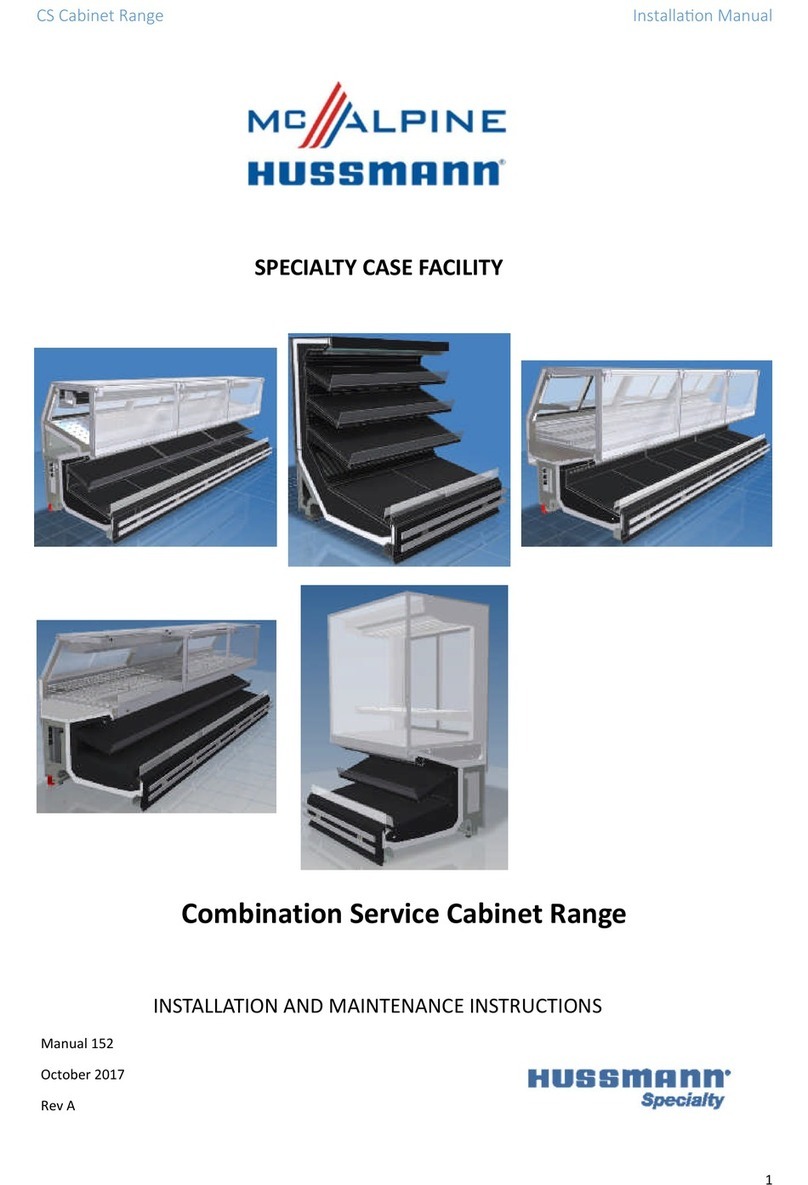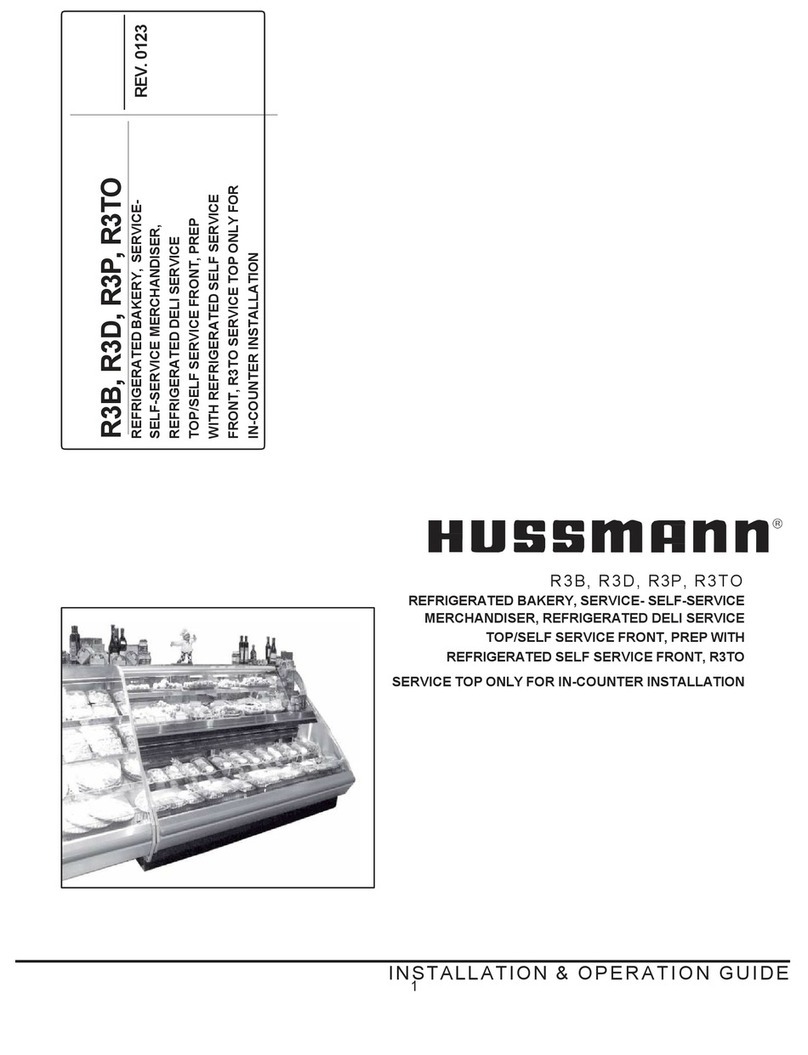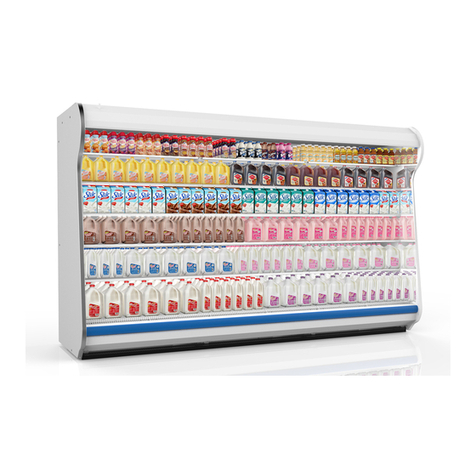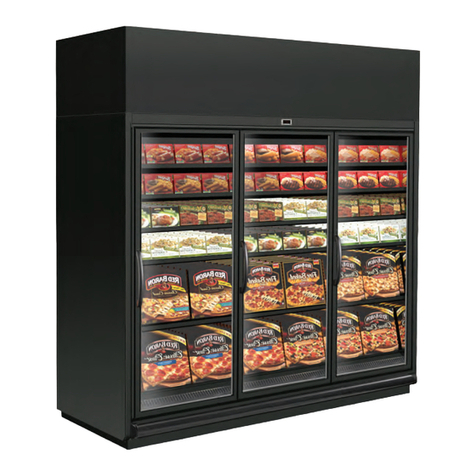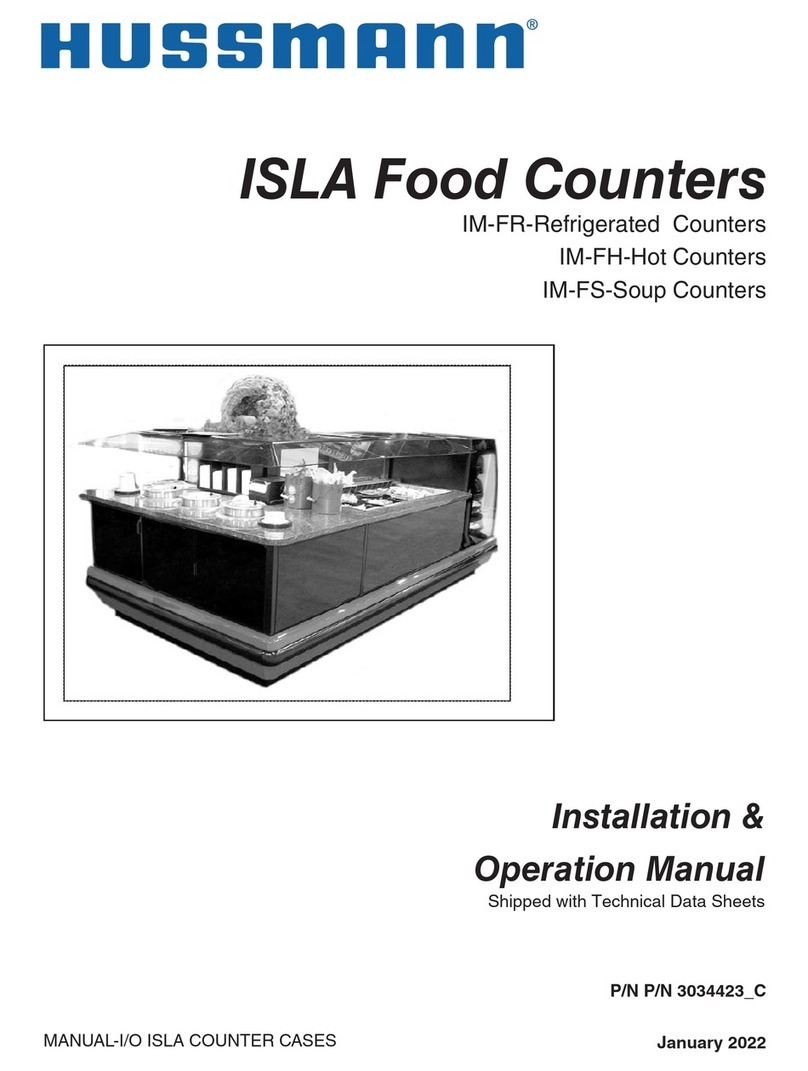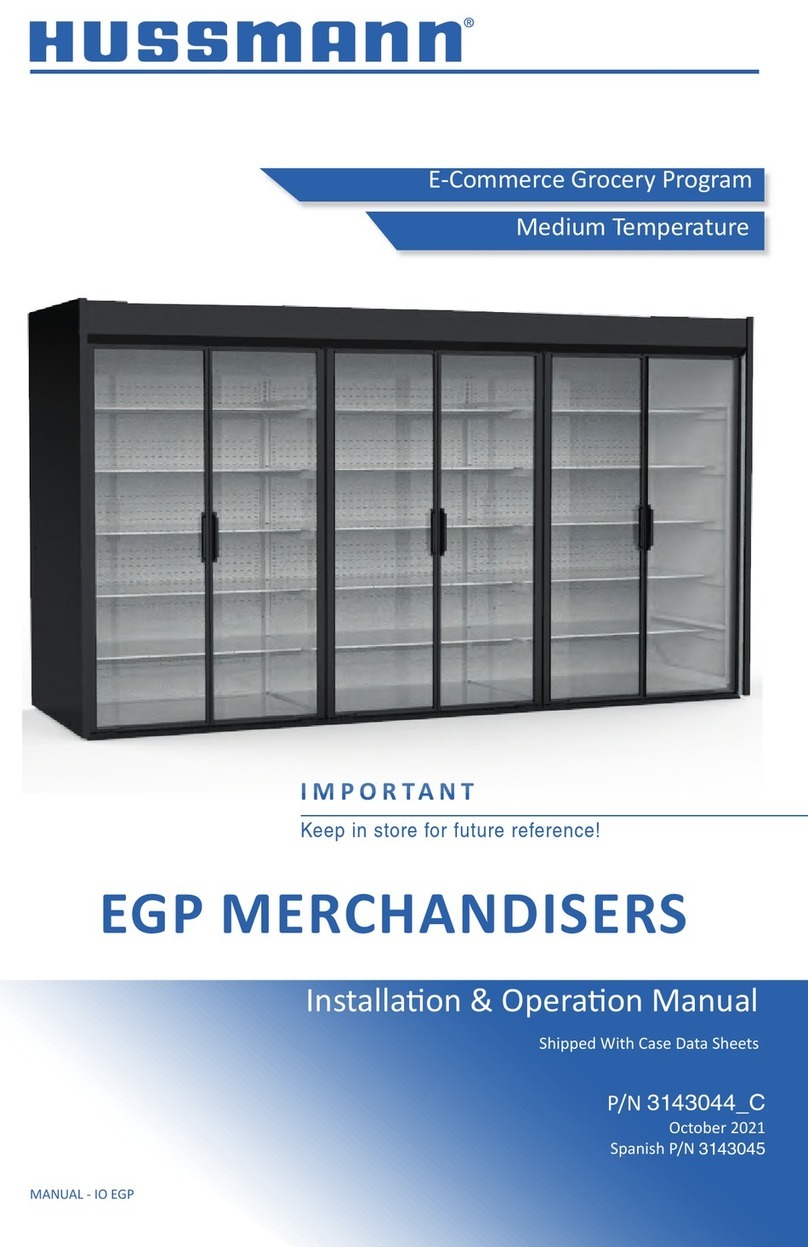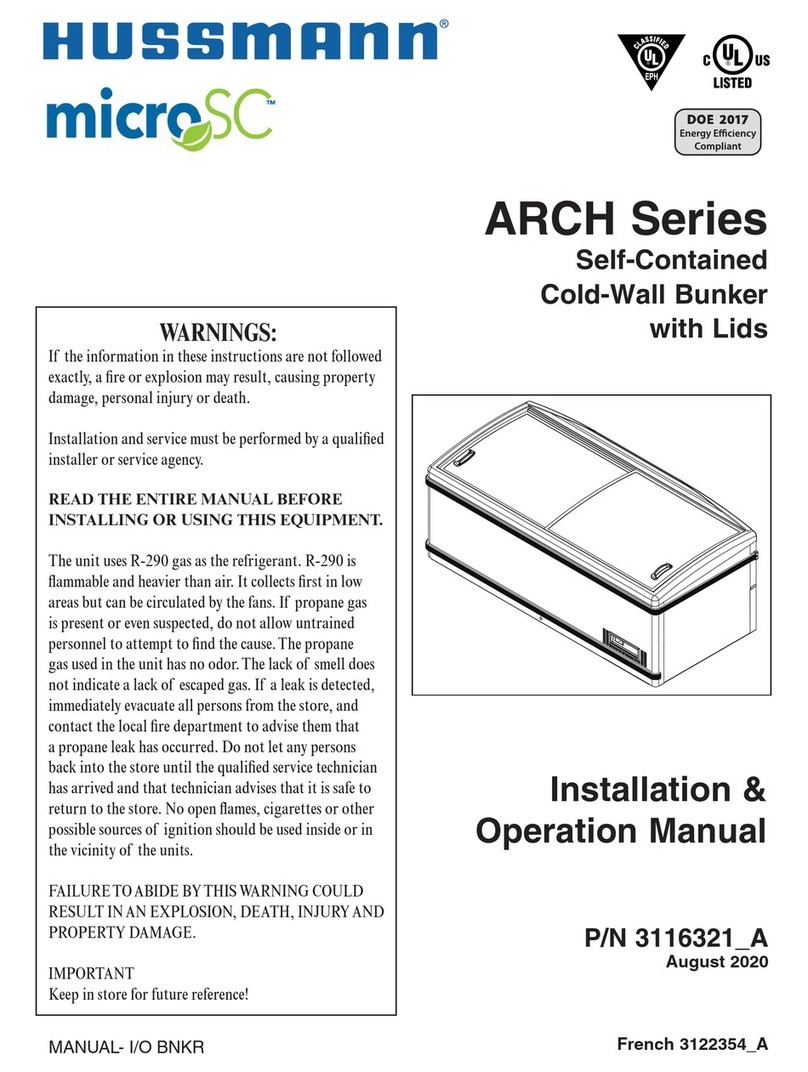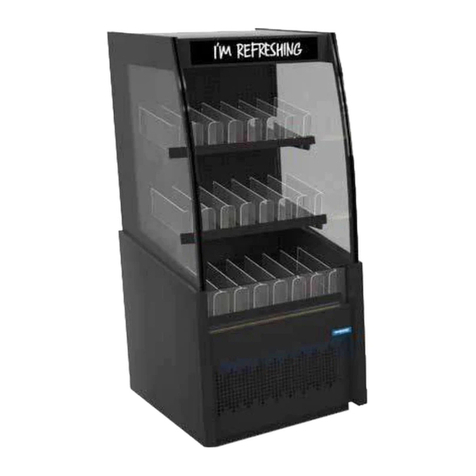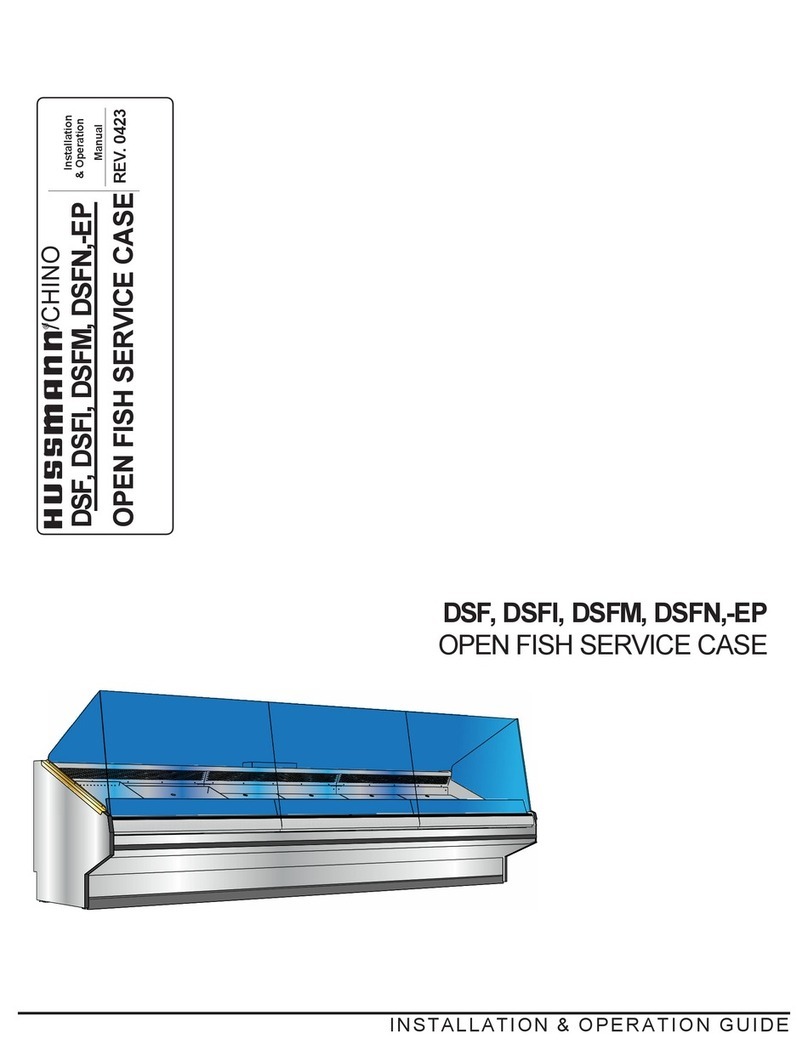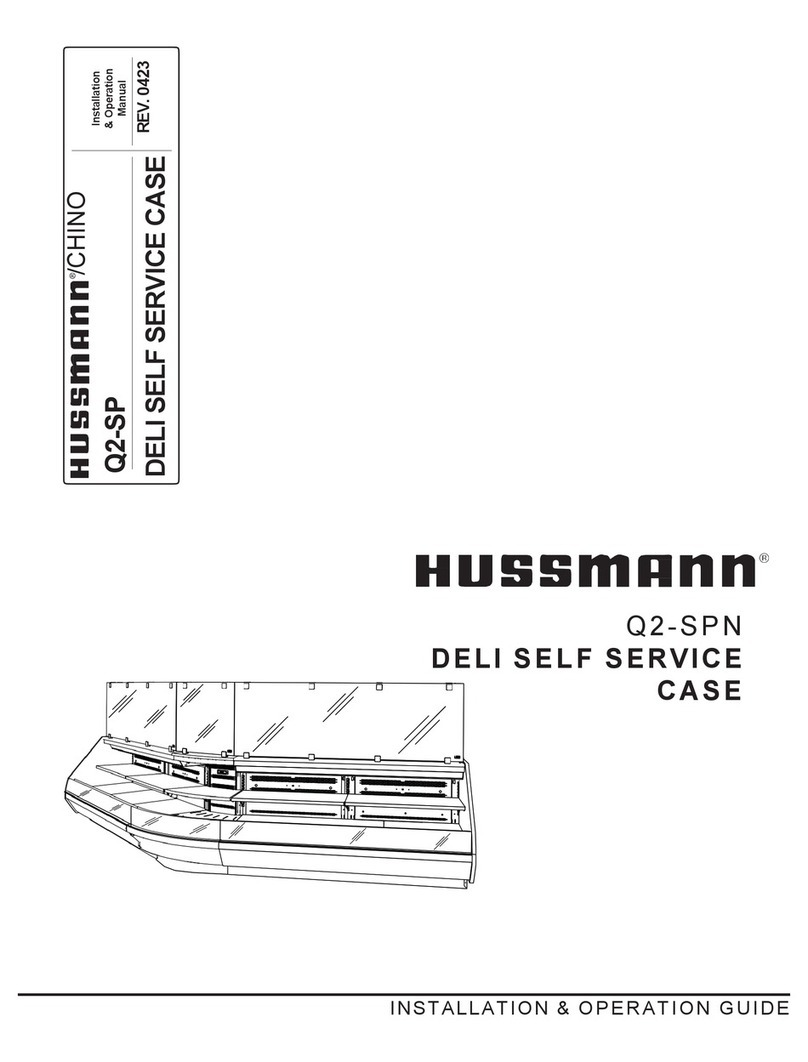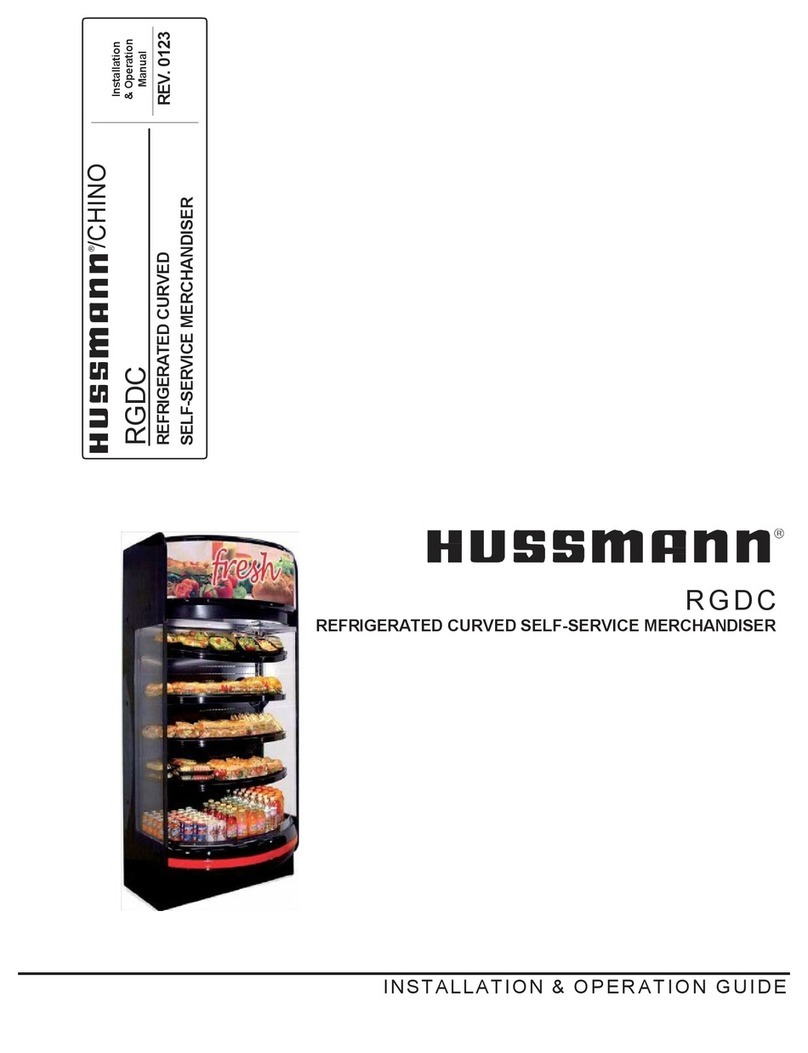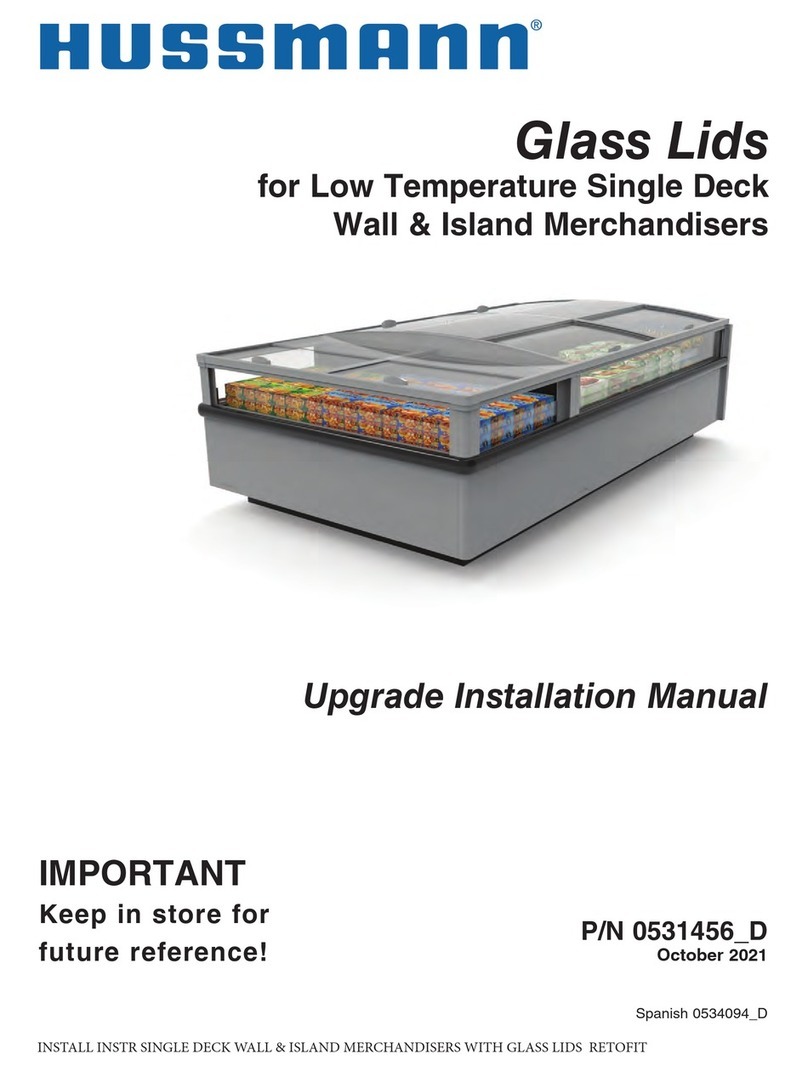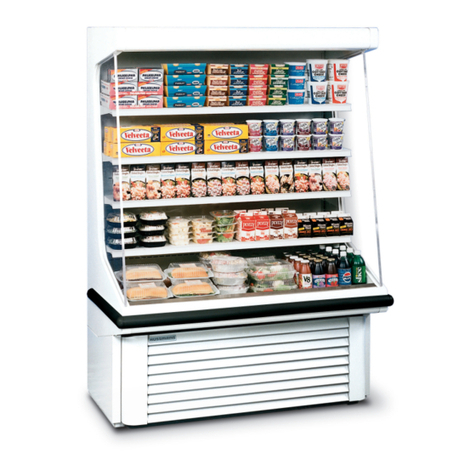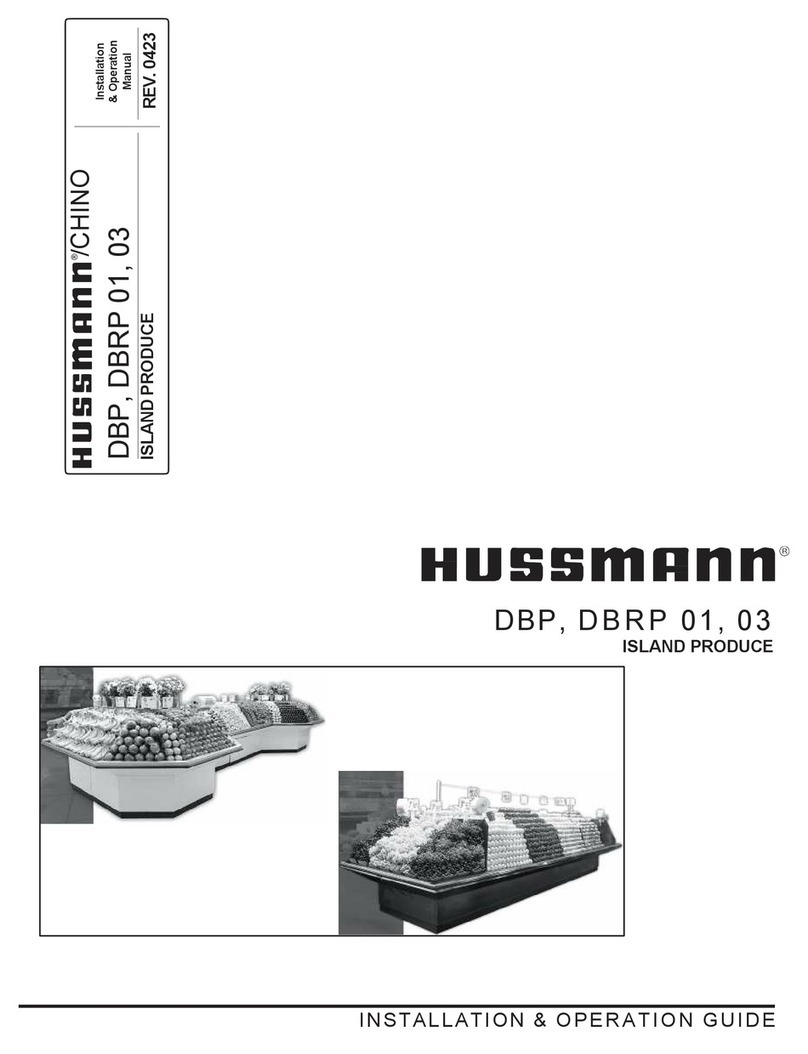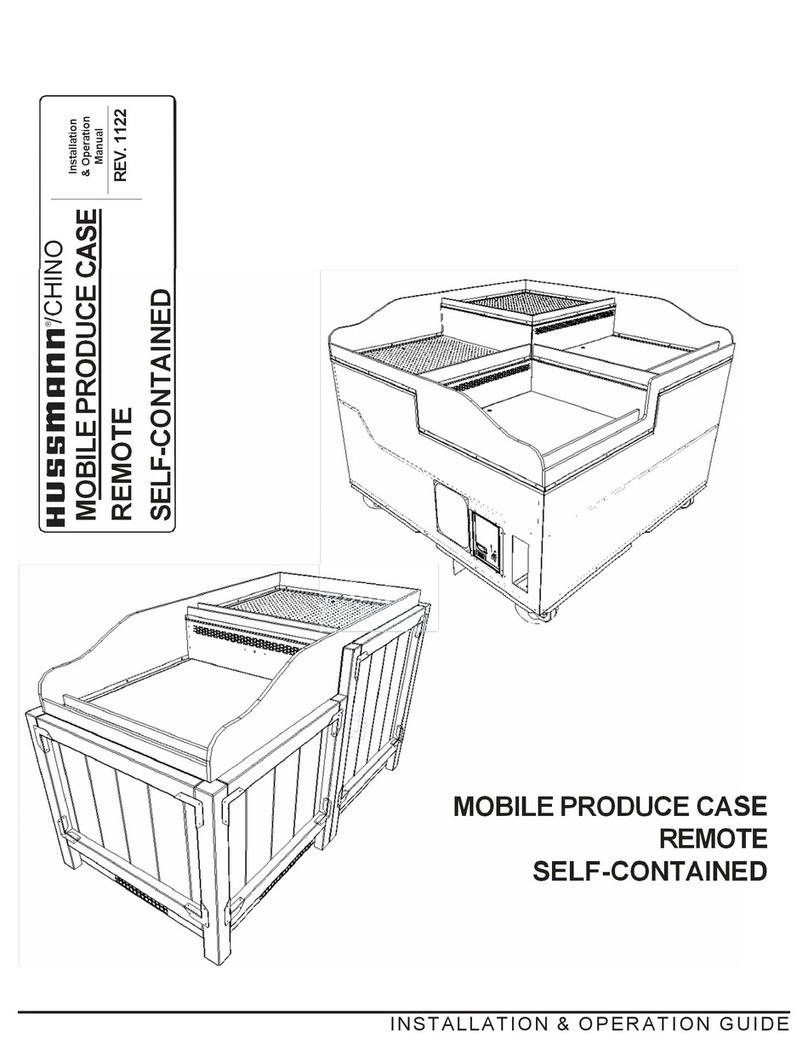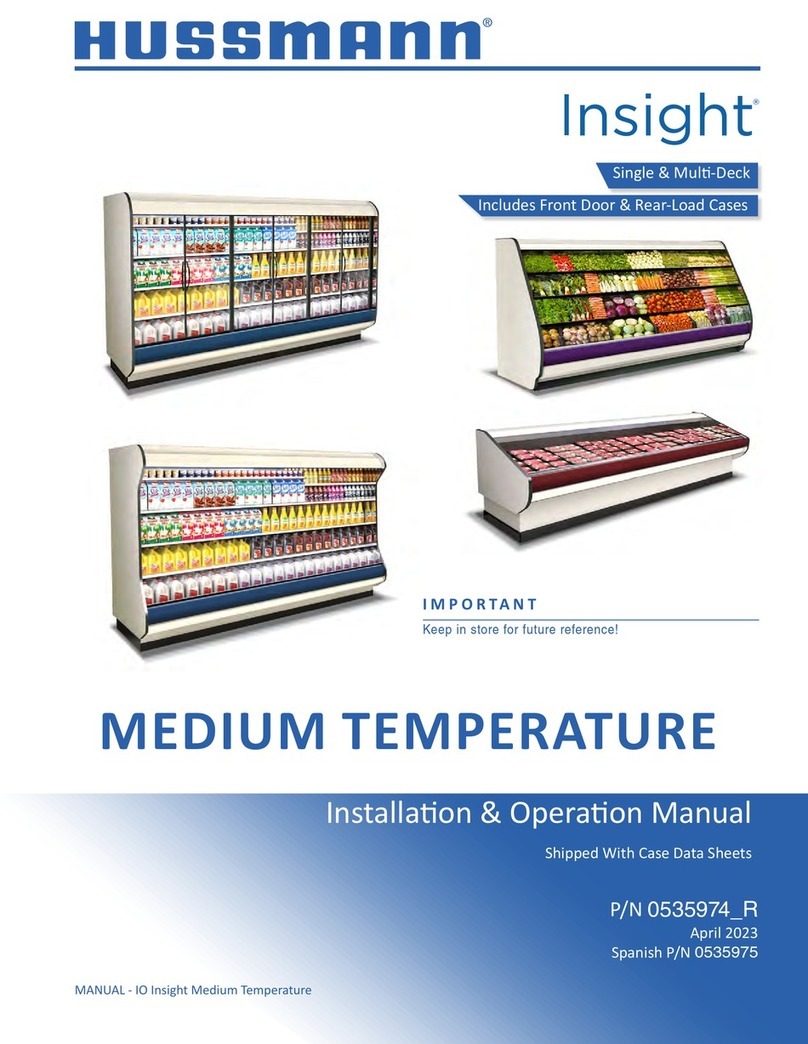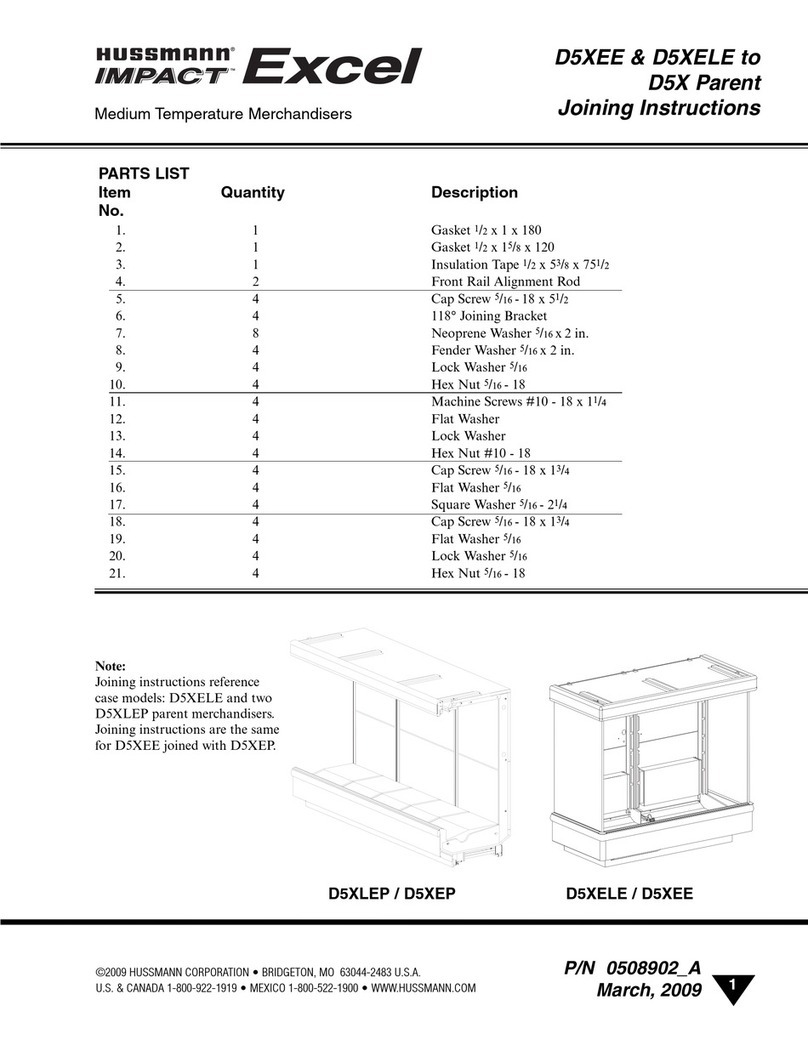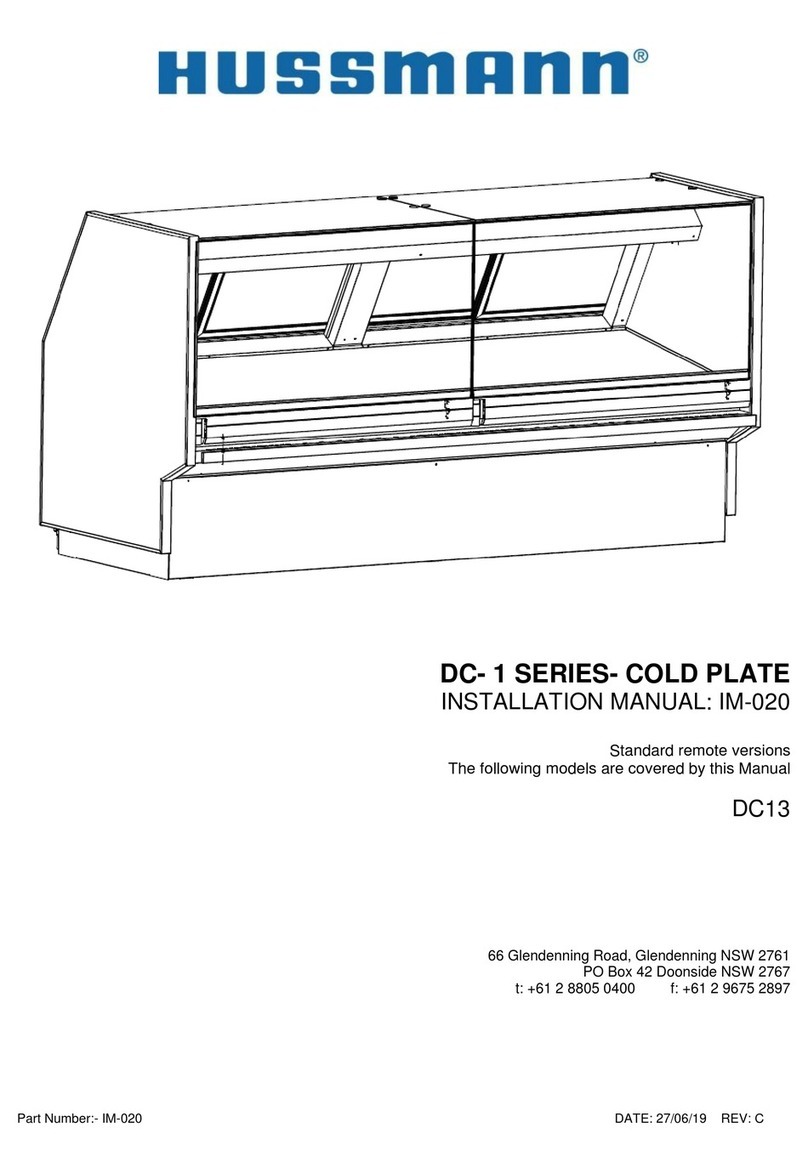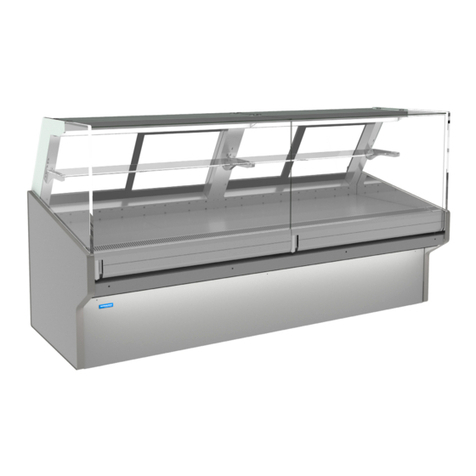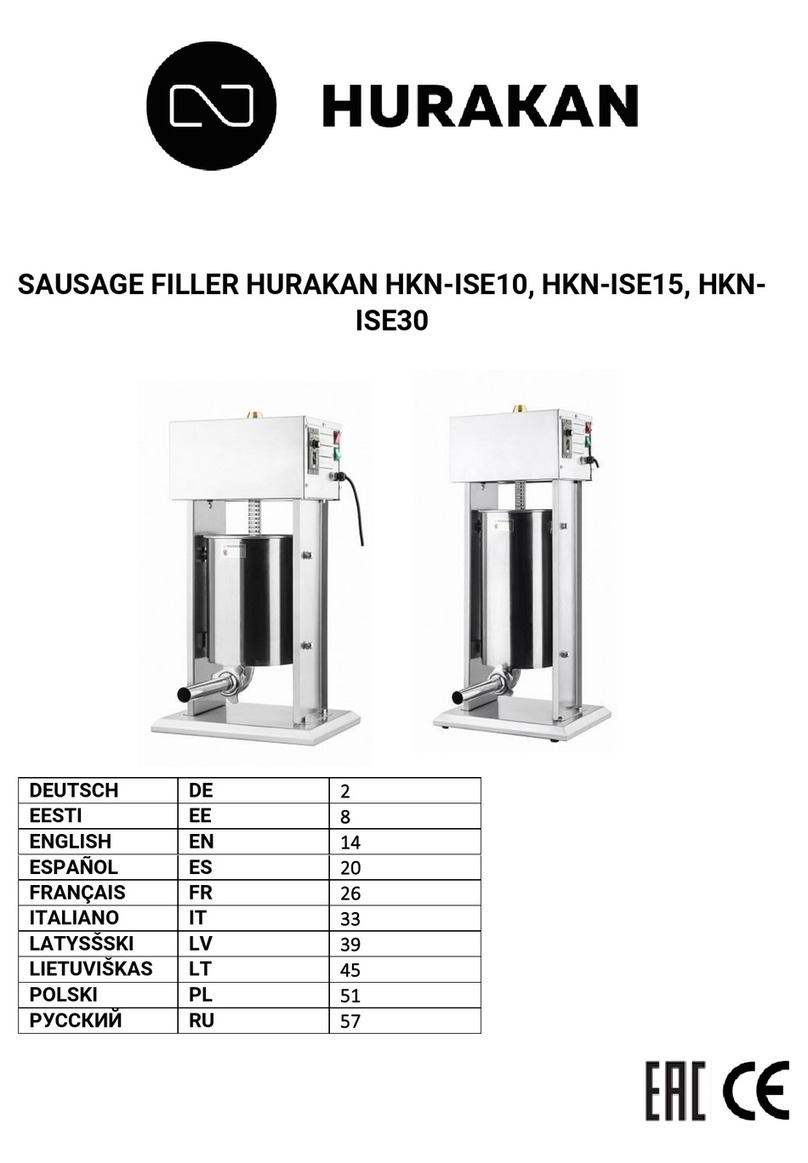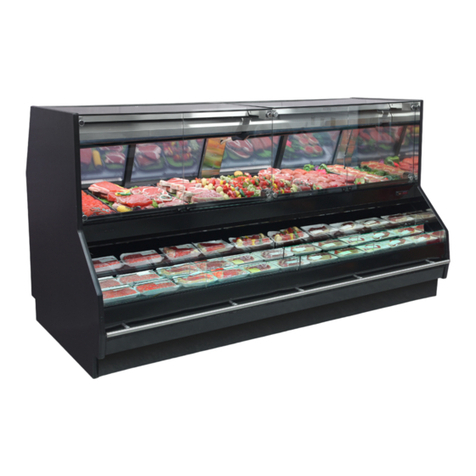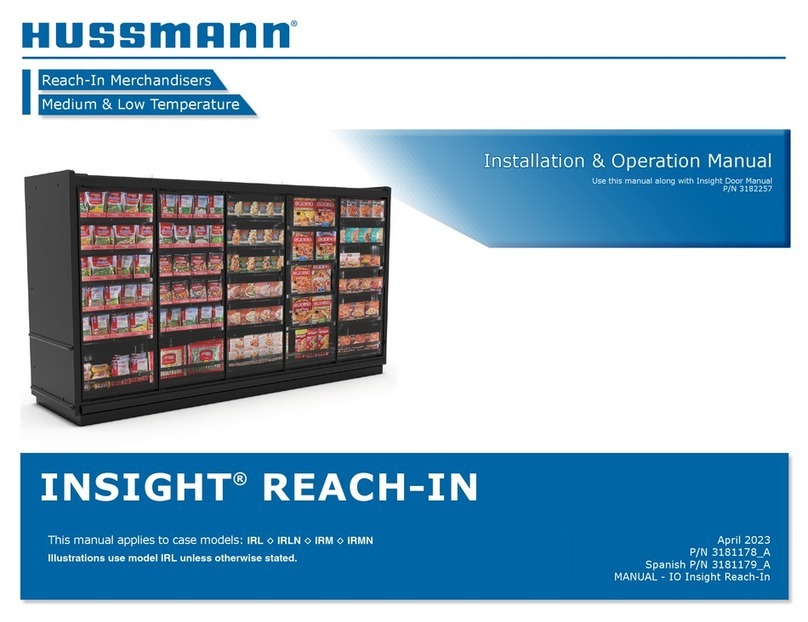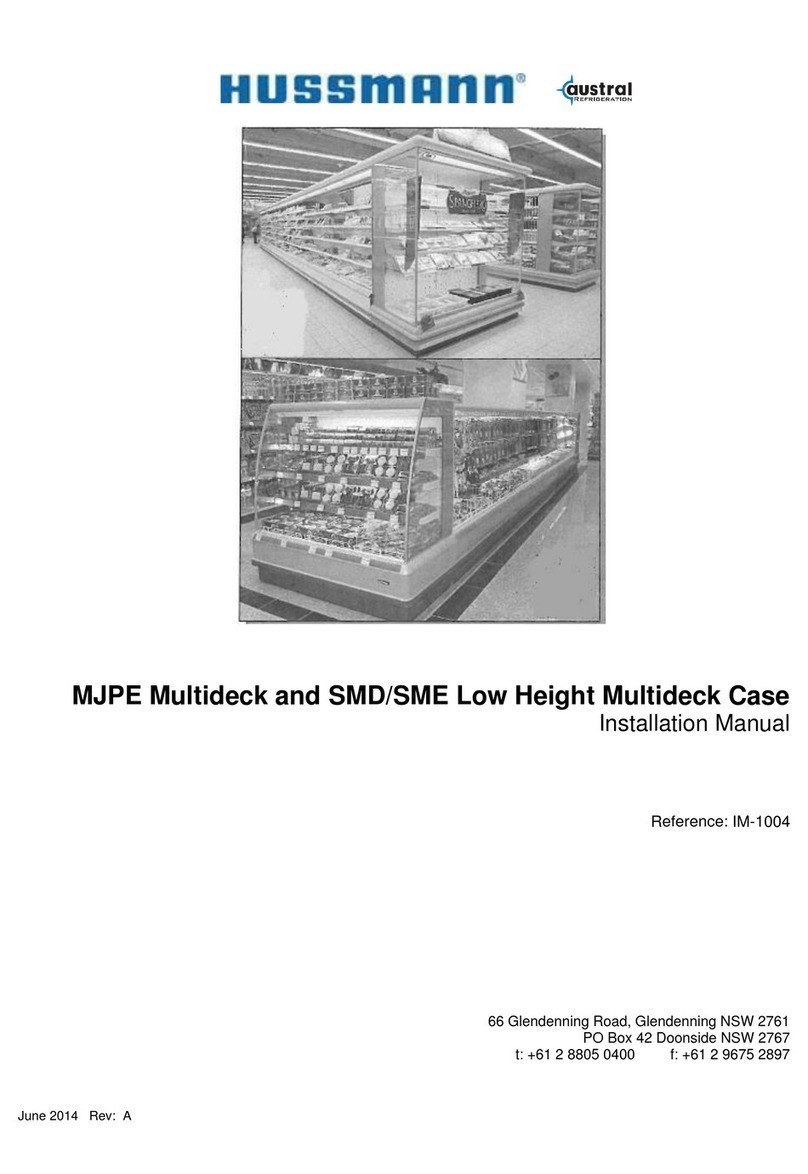10
T-STAT and Suction Stop Solenoid at each case.
Do not use EPR valves, Liquid Line Solenoids or
electronic control devices of any kind, as these
allow temperature swings causing dehydration and
excessive energy consumption.
3. Product should be worked and rotated on a regular
basis, not to exceed a 4-hour period.
4. At night, turn off case lights and cover the product
with a damp (not wet) cloth similar to cheese cloth
(etc.). This should be washed out in the morning and
kept in a walk-in box during the day so that it is cool
and moist when covering the product.
5. Discharge air temperature should be approximately
26°F, with between 150-200 FPM air velocity. Do not
display product directly within the air discharge.
6. Clean Humidity system a minimum of every 90 days
for proper system operation.
Case Cleaning
CLEANING PRECAUTIONS
When cleaning:
•Do not use high pressure water hoses
•Do not introduce water faster then waste outlet can drain
•NEVER INTRODUCE WATER ON SELF CONTAINED UNIT
WITH AN EVPORATOR PAN
•NEVER USE A CLEANING OR SANITIZING SOLUTION
THAT HAS AN OIL BASE (these will dissolve the butyl
sealants) or an AMMONA BASE (this will corrode the
copper components of the case)
•TO PRESERVE THE ATTRACTIVE FINISH:
•DO USE WATER AND A MILD DETERGENT FOR THE
EXTERIOR ONLY
•DO NOT USE A CHLORANITED CLAENER ON ANY
SURFACE
•DO NOT USE ABRASIVES OR STEEL WOOL SCOURING
PADS (these will mar the finish)
Do Not Use:
• Mineral oil based solutions, as these will dissolve
the butyl sealants used in the construction of the
merchandisers.
• Abrasive cleansers and scouring pads, as these will
mar the finish.
Do:
• Remove the product and all loose debris to avoid
clogging the waste outlet.
• Thoroughly clean all surfaces with soap and hot
water. Do NOT use steam or high water pressure
hoses to wash the interior. These will destroy the
merchandisers’ sealing causing leaks and poor
performance.
• Rinse with hot water, but do NOT flood. Never
introduce water faster than the waste outlet can
remove it.
NOTE: Self-contained Models
The evaporator pan must be monitored
for overflow conditions. Provide drainage if
necessary. After cleaning and rinsing, purge the pan
of any standing water.
• Care should be taken to minimize direct contact
between fan motors and cleaning or rinse water.
• Allow the merchandisers to dry before resuming
operation.
• When cleaning lighted shelves, wipe down with a
damp sponge or cloth so that water does not enter
the light channel. Do NOT use a hose or submerge
shelves in water.
Stainless Steel Cleaning and Care
There are three basic things, which can break down your
stainless steel’s passivity layer and allow corrosion.
1. Mechanical Abrasion
Mechanical Abrasion means those things that
will scratch the steels surface. Steel Pads, wire
Brushes, and Scrapers are prime examples.
2. Water
Water comes out of our tap in varying degrees of
hardness. Depending on what part of the country
you live in, you may have hard or soft water. Hard
water may leave spots. Also, when heated, hard
water leaves deposits behind that if left to sit, will
break down the passive layer and rust your stainless
steel. Other deposits from food preparation and
service must be properly removed.
3. Chlorides
Chlorides are found nearly everywhere. They
are in water, food and table salt. One of the worst
perpetrators of chlorides can come from household
and industrial cleaners.
Don’t Despair! Here are a few steps that can help
prevent stainless steel rust.
1. Use the Proper Tools
When cleaning your stainless steel products, take
care to use non-abrasive tools. Soft Clothes and
plastic scouring pads will NOT harm the steel’s
passive layer. Stainless steel pads can also be
used but the scrubbing motion must be in the same
direction of the manufacturer’s polishing marks.
2. Clean With the Polish Lines
Some stainless steels come with visible polishing
lines or “grain”. When visible lines are present, you
should ALWAYS scrub in a motion that is parallel to
them. When the grain cannot be seen, play it safe
and use a soft cloth or plastic scouring pad.
3. Use Alkaline, Alkaline Chlorinated or
Non-chloride Containing Cleaners
While many traditional cleaners are loaded
with chlorides, the industry is providing an ever
increasing choice of non-chloride cleaners. If you
are not sure of your cleaner’s chloride content
User Information (Cont'd)
